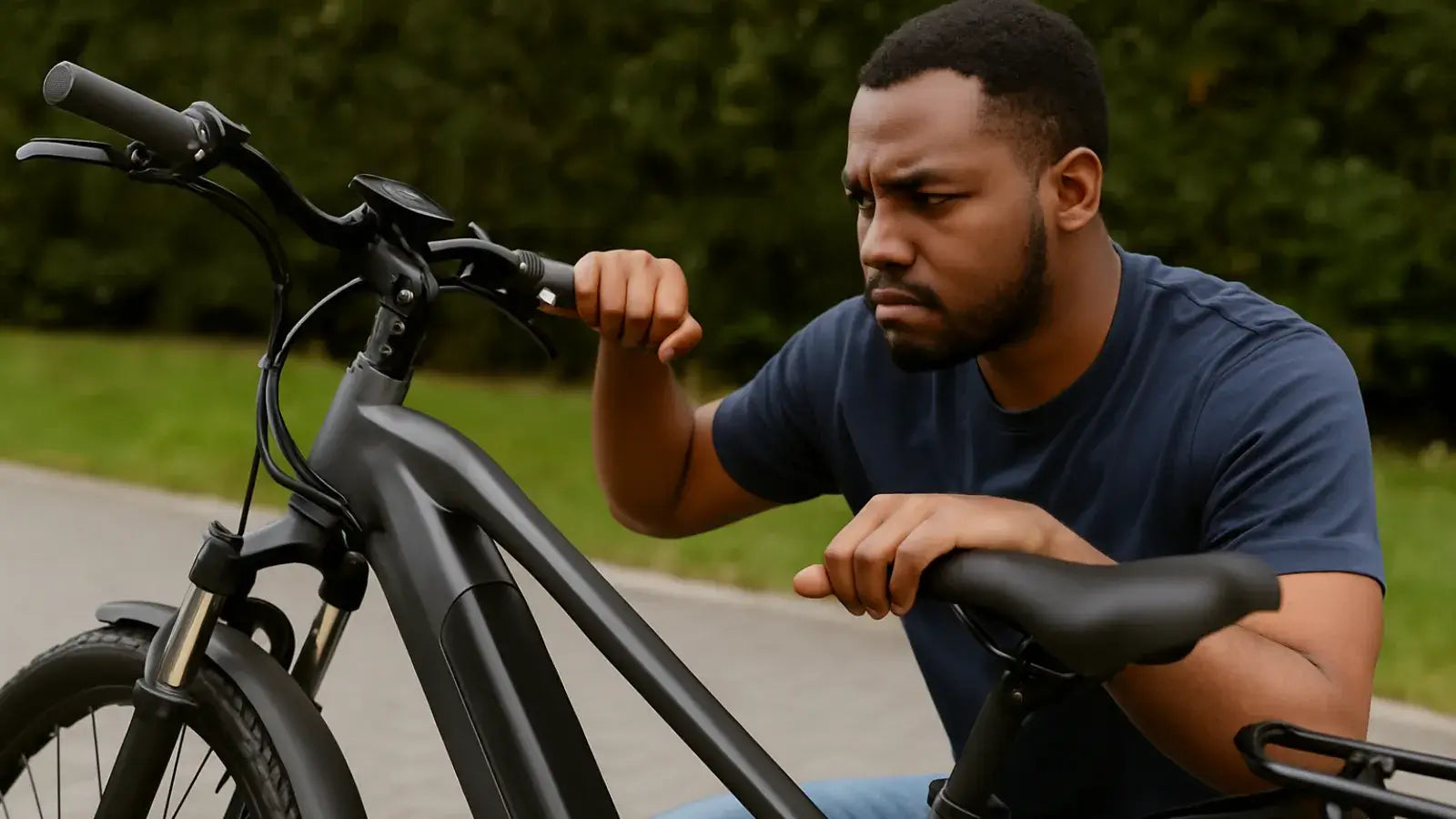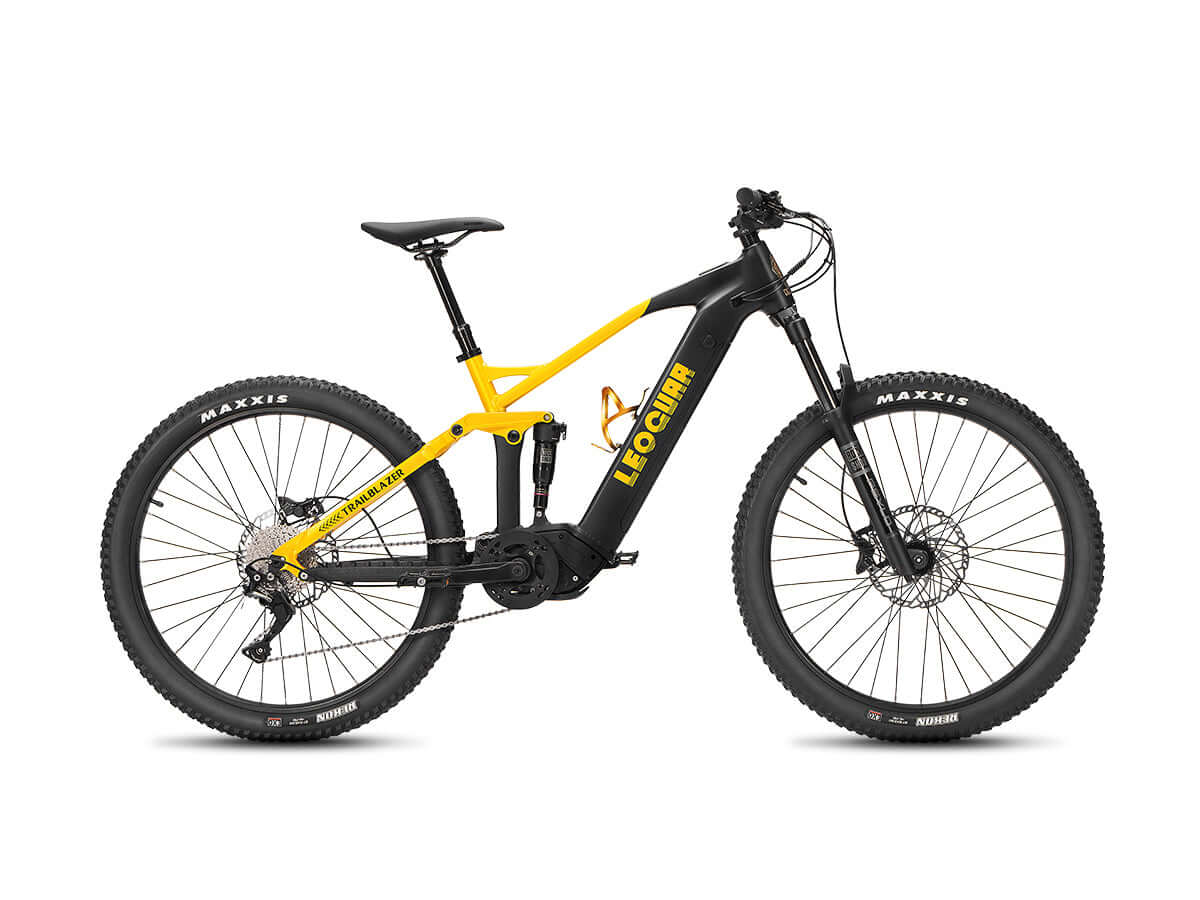
eBike Turns On but Won’t Move: What’s Wrong and How to Fix It
This is one of the worst e-bike problems. You get on your bike, turn it on, and see the screen light up. But when you twist the throttle or pedal, nothing happens at all. Your ebike turns on but won't move. The good news is simple. A working screen means your battery is probably fine. The problem is somewhere between your controls and the motor. This guide will help you find the problem step by step, starting with easy checks and moving to harder ones.
Quick 5-Minute Pre-Check
Let's start with the most common problems first. These simple mistakes cause many no-go situations. Most of these checks take just a few minutes. Here is a quick list to check:
Check 1: Throttle vs. Pedal Assist (PAS): Are you in the right mode? Many e-bikes need you to pedal at least half a turn before the motor starts working. Try pedaling first, even if your bike has a throttle. If you use pedal assist, make sure your throttle isn't stuck, because this can block the pedal sensor.
Check 2: Battery Connection: Push down hard on your battery. Is it fully clicked into place? A loose battery might power the screen but can't give enough power to the motor. You should hear or feel a solid click when it's right.
Check 3: Display Error Codes: Look at your screen carefully. Modern e-bikes show error codes that tell you exactly what's wrong. These codes are how your bike talks to you. You can find information about common e-bike error codes on forums and websites.
Check 4: Power Level: This is the easiest mistake to make. Is your pedal assist level set to 0 or off? Go through the assist levels to make sure you have power turned on. We once spent an hour trying to fix a bike, only to find the pedal assist was set to zero because the owner bumped it against a wall.
Check 5: Walk Mode: Many e-bikes have walk mode that you turn on by holding the down arrow or a special button. Try holding this for a few seconds. Sometimes turning this on and off can fix a small software problem that stops the motor from working.
Finding The Signal Problem
If those quick checks didn't work, your ebike turns on but won't move because of a broken signal path. We need to follow the command from your hands and feet to the bike's computer and then to the motor.
Brake Sensors
This is the top cause of the problem. Your brake levers have sensors that cut power to the motor when you pull them for safety. If a sensor is broken, stuck, or moved, it will always send a stop signal to the computer.
How to Check:
- Look at the brakes: Check your brake levers. Do they come back to their normal position after you pull and let go of them? A sticky lever will keep the sensor on.
- Listen and feel: Pull and let go of the levers gently. You might hear a small click from the switch inside as it turns on and off.
- Check the wire: Follow the thin wire from each brake lever. Look for damage like pinches, cuts, or sharp bends where the wire might be broken inside.
- Check alignment: Some systems use a small magnet on the lever and a sensor on the frame. A bump or fall can move these out of place. Make sure the magnet passes very close to the sensor when you let go of the lever.
- Unplug test: You can follow the brake sensor wires to their plugs and unplug them. If the motor works after unplugging a sensor, you found your problem. Warning: Don't ride the bike this way - this is just for testing.
Throttle and Pedal Sensor Check
Next, check your go signals: the throttle and the pedal assist sensor.
Throttle Check:
If your bike has a throttle, first look at its wire for damage, just like you did with the brake sensors. If you have a thumb throttle, make sure it moves freely and isn't stuck.
Pedal Sensor Check:
The pedal assist sensor tells the computer you're pedaling. It has a magnetic disk on your pedal arm and a sensor on the bike frame.
- Check the gap: The sensor needs to be very close to the magnet disk to read it, usually 1-3mm apart. If the disk is bent or the sensor moved, it won't get a signal.
- Look for damage: Check the magnet ring. Is it cracked or missing any magnets?
- Clean everything: The pedal sensor is low on the bike and gets dirty easily. Dirt can block the magnetic signal, so wipe both the sensor and disk clean.
Wire and Plug Check
Your e-bike's wiring is like its nervous system. Loose, dirty, or broken plugs cause many electrical problems. Check these main connection points:
- Motor plug: This is the thick cable going to the hub motor. It usually has a quick-disconnect plug 6-12 inches from the motor. Make sure this is pushed together tightly.
- Computer plugs: Find your computer box and check that all plugs going into it are firmly seated. Gently pull on each one to test.
- Handlebar plugs: Follow the wires from your screen, throttle, and brake levers. They usually go to a group of plugs near the handlebars.
When you check, look for bent pins inside the plugs, green or white crusty stuff from water damage, or plugs that have worked loose from vibration. Unplug, check, and firmly push each one back together.
Advanced Problem Finding
If you've checked everything basic and still have problems, the issue might be with a main part. These checks are harder but can help you find a serious problem.
Is The Computer Bad?
The computer is your e-bike's brain. It takes all the inputs and decides how much power to send to the motor, but it can break.
Signs of Computer Problems:
- A faint smell of burnt electronics from the computer area.
- If you open the computer housing, you might see water damage, rust, or burnt parts on the circuit board.
- Some computers have a small status light that blinks in patterns to show faults.
Remember that e-bike computers are not all the same. They work on specific voltages like 36V, 48V, or 52V, and using the wrong replacement will not work and can damage other parts.
Inside The Motor
Problems inside the motor are less common but can cause a no-go situation.
- Hall Sensor Problems: Inside the motor are sensors that tell the computer the motor's position. This helps the computer apply power at the right time, and if these sensors fail, the motor might not move at all or move in a jerky way.
- Water Damage: If you rode through deep water or used a pressure washer to clean your bike, water might have gotten inside the motor. This can cause short circuits and rust.
Random and Software Problems
Sometimes the problem isn't constant, which can be even more annoying.
- Temperature Problems: Does the bike only fail when it's very hot or cold outside? This can point to a failing electronic part that only breaks connection when materials expand or contract with temperature.
- Soft Reset: Check your e-bike's manual for a factory reset option in the settings menu. This can sometimes clear a software bug that is stopping the motor, but note your settings first because this will reset everything to default.
- Impact Problems: We once worked on a bike that would only cut out after hitting a big bump because a wire inside the computer had a hairline crack that would only disconnect for a split second on hard impacts.

Bike Won't Turn On?
A different but related problem is when the e-bike won't turn on at all - no screen, no lights, nothing. If you're facing this problem, the troubleshooting is different because you're looking for total power failure, not a signal problem. The quick list for no power is:
- Check the battery: Is it actually charged? Use a multimeter to check the voltage if you can, and check the battery's own power lights if it has them.
- Check the power button: The button itself can fail, so inspect the wiring to the button if possible.
- Check the main fuse: Some batteries or systems have a main fuse that might have blown.
- Check main power plugs: Look at the primary connections between the battery, its holder, and the computer.
When to Get Help
Electric Bike DIY troubleshooting is great, but it's important to know your limits. Call a professional e-bike mechanic if you have completed all these checks and the bike still won't move, the screen shows an error code you can't clear, you smell burning electronics, or you're not comfortable doing these steps. There's no shame in getting expert help. A good mechanic has special tools and experience that can find a problem in minutes that might take you hours, saving you time and preventing more damage.
Stopping Future Problems
To minimize the chances of your ebike turning on but not moving in the future, follow these simple habits. Check your main motor and battery plugs every few months to make sure they're tight. Clean your bike regularly, paying special attention to the pedal sensor and magnet disk on the crank. Avoid riding through deep puddles and never use a pressure washer to clean your e-bike. Be gentle with your handlebars and controls, avoiding yanking on cables or letting the bike fall on its side.
FAQ
1. Q: My e-bike display turns on but the motor won't work. What's the most common cause?
A: The most common cause is stuck or faulty brake sensors. These safety sensors cut power to the motor when activated, and if they're stuck or damaged, they'll constantly send a stop signal even when you're not braking.
2. Q: How do I know if my pedal assist sensor is working properly?
A: Check that the sensor is 1-3mm away from the magnet disk, clean both parts of dirt and debris, and make sure the magnet disk isn't cracked or missing magnets. The sensor needs to be very close to read the magnetic signal properly.
3. Q: Can I ride my e-bike with the brake sensors unplugged?
A: No, never ride with brake sensors unplugged. While unplugging them can help diagnose the problem, it removes an important safety feature. Always replace faulty brake sensors before riding.
4. Q: What should I do if my e-bike won't turn on at all?
A: First check if the battery is actually charged, then inspect the power button, main fuse, and primary power connections between the battery and controller. This is a different problem from when the display works but the motor doesn't.
5. Q: How can I prevent my e-bike from having motor problems in the future?
A: Regularly check that connectors are tight, keep the bike clean especially around the pedal sensor, avoid deep water and pressure washers, and handle the controls gently to prevent damage to brake levers and throttles.









































Leave a comment